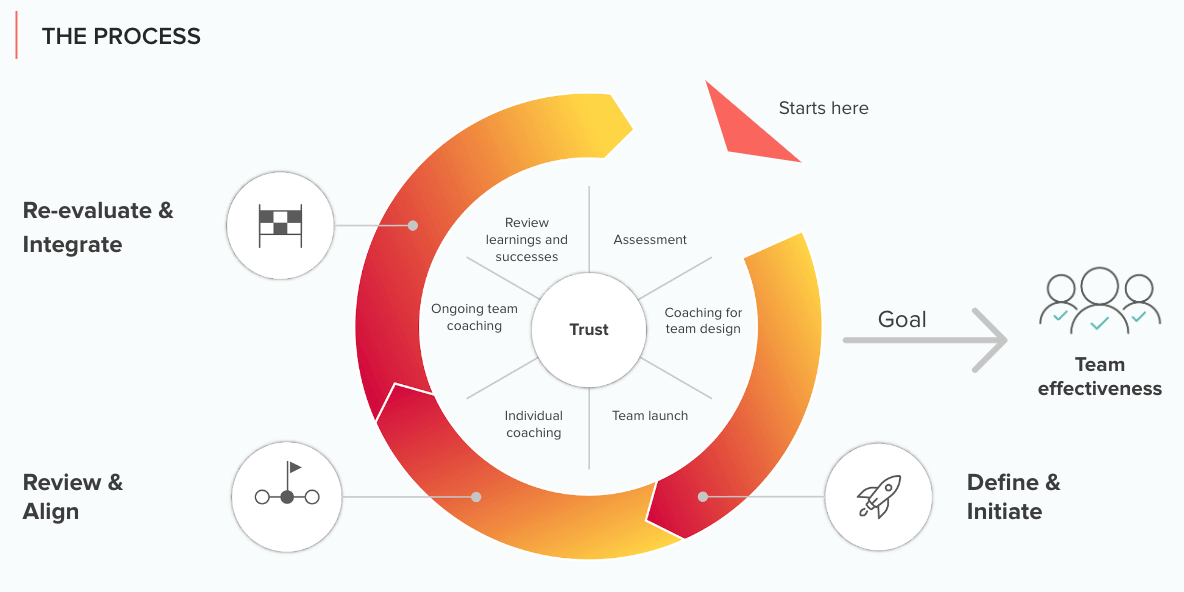
- By María Dueñas
- ·
- Posted 28 Mar 2023
Adopting technical coaching in your organisation
Transformation, through technical coaching can only happen when people are willing to change.

There are many variables that determine the success of a team and its results. In this post we’ll share how an effective team is much more than a group of people working towards a common goal.
A technical coach can be an important player in helping a team align and create a culture that all members can identify with. José Huerta, Technical Coach and Codurance Managing Director in Spain, offers tools to create an effective team capable of collaborating, aligning and achieving its goals while fostering a good working environment.
Building a team is not only about creating it from scratch, but also about developing a new dynamic within an established group of people and making it evolve.
There are three main areas to take into account when starting a launch:
Most of the time, the purpose of a team is related to the product or the result to be achieved. But what is the team really striving for? Beyond an end product or goal. Based on Jim Collins' definition, José explains that what the team needs is a vision: a common goal or motivation that has nothing to do with the execution of a project, but with something prior that inspires them in all the work they undertake regardless of the particular project they are on.
It is a yin-yang mix, involving, on the one side, a core ideology with shared values and an inspiring purpose beyond what they can reach, e.g. "saving the environment". And the other side is the envisioned future, what would challenge them to move forward, the audacious goal on a 10 to 30 year horizon.
Assess and create a common picture of where the team is in terms of capabilities to do what the project needs. How is the team currently functioning? What is hindering the team's work? Are the necessary skills in place?
To make this assessment, there are certain areas that can be studied, such as the team architecture, the production pathways, the quality strategy and the team development model.
Team members need a shared vision of where their project should go. It is important that everyone can share their ideas and that from this exchange they can generate common understandings so that everyone agrees on the steps to be taken. Including all members is necessary to strengthen the team and increase ownership and individual responsibility.
From the relationship perspective a team can establish agreements in order to be clear on expectations:
There are also three useful tools that help to understand how the team is performing and in which areas it can improve.

In summary, the process of building a team effectively (and how technical coaching plays an important role in this) can be encapsulated in:
It is important to always reassess where the team is at. The team is constantly re-launching itself because as it evolves there are things that require new attention.
If you’d like to watch the entire session, you can find a link to the video below. You can also review concepts and tools in this miro board that Jose used for his presentation.
You can also check out more previous sessions on technical and team management topics on our videos page.
Thanks to Jose for this session and insights. If you’d like to find out about more technical practices, then please visit our Insights page.

Transformation, through technical coaching can only happen when people are willing to change.

So, what is Rubber Ducking? Remember when it was the norm to go into the office, daily, and we were able to to easily talk out loud to the person..

What is a good engineering team culture, and how can we influence it? Around this topic was José Enrique Rodríguez Huerta's, Managing Director and..
Join our newsletter for expert tips and inspirational case studies
Join our newsletter for expert tips and inspirational case studies